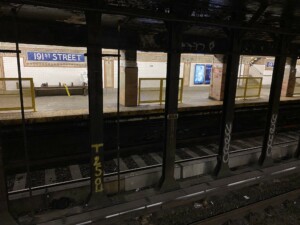While the plans for the redevelopment of the area surrounding Penn Station harbors much disagreement among New Yorkers, the renovation of Penn Station, a subterranean Midtown Manhattan rail hub in dire need of a makeover, is generally supported. The original Penn Station was demolished in 1963 made way for the construction of the aboveground entertainment venue Madison Square Garden; today, the smaller station tucked below MSG serves 600,000 riders each day. Plans to renovate the dated, cramped, and not to mention pungent transit center into a state-of-the-art transit facility for the 21st century are long overdue.
On Wednesday, New York Governor Kathy Hochul and the Metropolitan Transportation Authority (MTA) announced the architecture and engineering team that will lead the effort to redesign the station, which serves New Jersey Transit, Amtrak, the Long Island Rail Road, and soon Metro-North Railroad. Following an open request for proposals process sent to 106 prequalified firms, which attracted five proposals, the selected firms comprise a joint venture led by FXCollaborative Architects LLP and WSP USA Inc., with London-based John McAslan + Partners serving as collaborating architect.
John McAslan + Partners is no stranger to overhauling old train stations. The firm redesigned London’s Kings Cross Station in 2012, adding a semi-circular concourse and inserting a “wave-form” roof and 1,000 translucent skylights, which draw natural light into the otherwise cavernous space—a design element transit officials back in New York and New Jersey want to incorporate in the revamped Penn Station.
“Since crews took a wrecking ball to the original Penn Station in 1963, generations of New Yorkers have been united in their call to build a new station worthy of New York,” Hochul said in a statement. “By approving the contract for the redesign of Penn Station, we move another step closer to getting it done. The transformation of Penn cannot come soon enough, and we look forward to building a world-class station that puts New Yorkers first, delivers a rider-focused transit experience, and a great neighborhood they deserve.”
Last year FXCollaborative and WSP unveiled the Penn Station Master Plan, which builds on the Empire Station Complex development unveiled by former Governor Andrew Cuomo. The latest reconstruction plan calls for a single-level facility with an expansive train hall. A 450-foot-long atrium lined with skylights would extend within the space, spanning from Madison Square Garden to 2 Penn Plaza.
The work follows the completion of Moynihan Train Hall, a 255,000-square-foot expansion project designed by Skidmore, Owings & Merrill. Housed inside the neighboring James A. Farley Building, the soaring new space functions as a ticketing and waiting area for Amtrak and the LIRR.
Other components of the proposed redesign for this next stage to transform Penn Station as laid out in the design contract, seek to resolve the issue of overcrowding within the station by improving circulation and flow with heightened ceilings and enlarged concourses.
On train platforms, a focus will be placed on improving passenger safety, taking into account accessibility and exit points. At street level, the station’s presence with the surrounding neighborhood will be better integrated.
The base contract for the preliminary station design has allocated $57.9 million to develop the proposal, which will also include making improvements to nearby subway stations and providing engineering support. As part of the contract, the MTA has assigned a goal of 22.5 percent of the work to be completed by certified Disadvantaged Business Enterprises.
According to Janno Lieber, MTA Chair and CEO, the design and construction “will take place on an aggressive timetable” with work expected to kick off in the coming months. As work finishes on Grand Central Madison—a new transportation hub adjacent to Grand Central Terminal that will bring the LIRR and Metro-North together under one roof—the MTA hopes to have the “most disruptive” work completed on Penn Station over the next five years, while some customers reroute their travels to the new Grand Central Madison. Under the current plans and timeline is also the hope to bring Metro-North service back to Penn Station, crosstown from Grand Central on the West Side of Manhattan, by 2027.
“The time to fix Penn Station is now, and this is an important step in the right direction,” New York City Mayor Eric Adams said. “New York City deserves a 21st-century transit hub as great as the city, and we are taking advantage of a once-in-a-generation opportunity to reconstruct Penn Station and revitalize the neighborhood.”
Meanwhile, another aging and much-maligned NYC transportation hub, the Port Authority Bus Terminal, will be razed and replaced with a brand new bus hub designed by a team led by Foster + Partners and design and engineering firm Epstein. That logistically complex is slated to conclude circa 2032.











